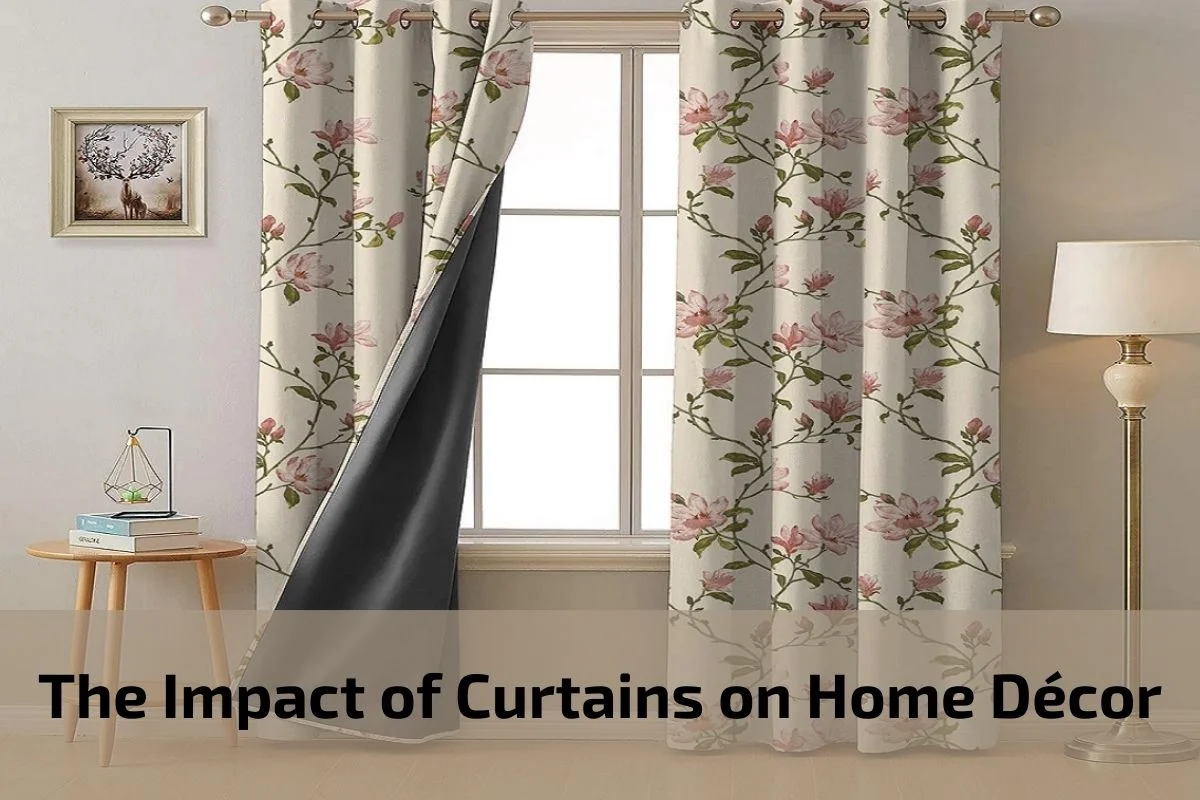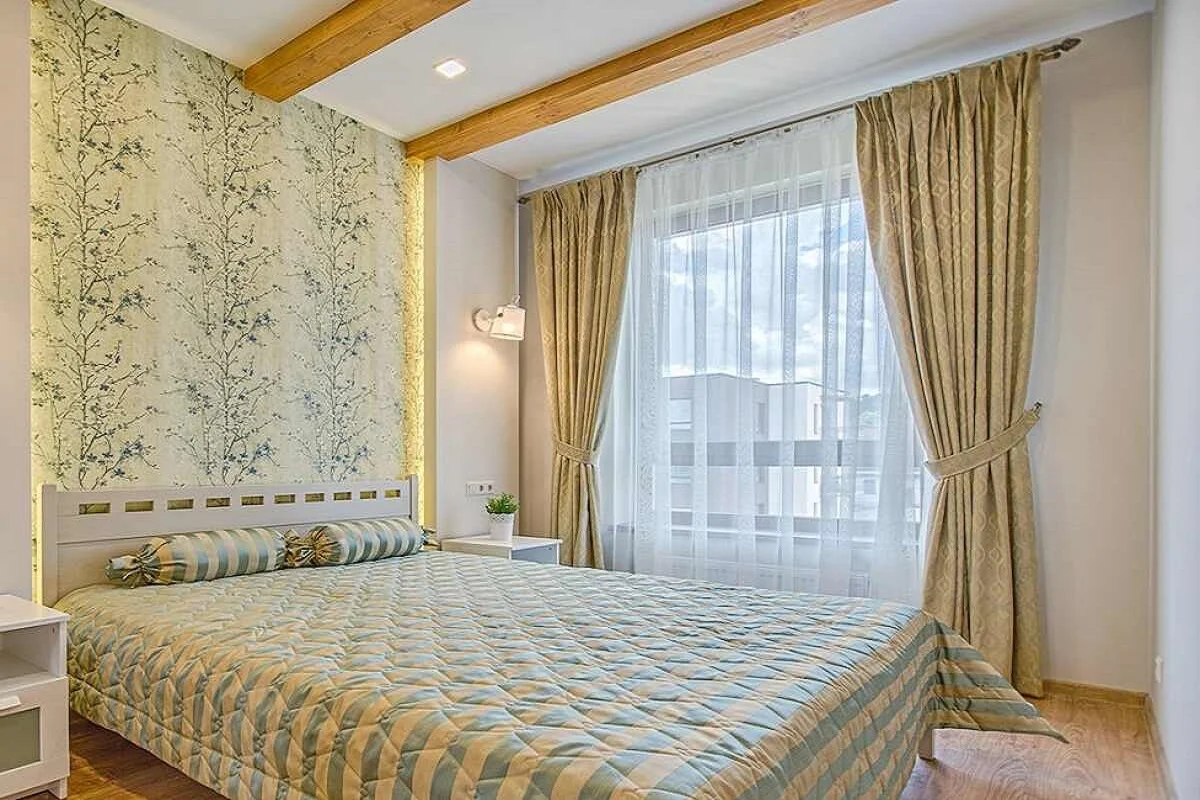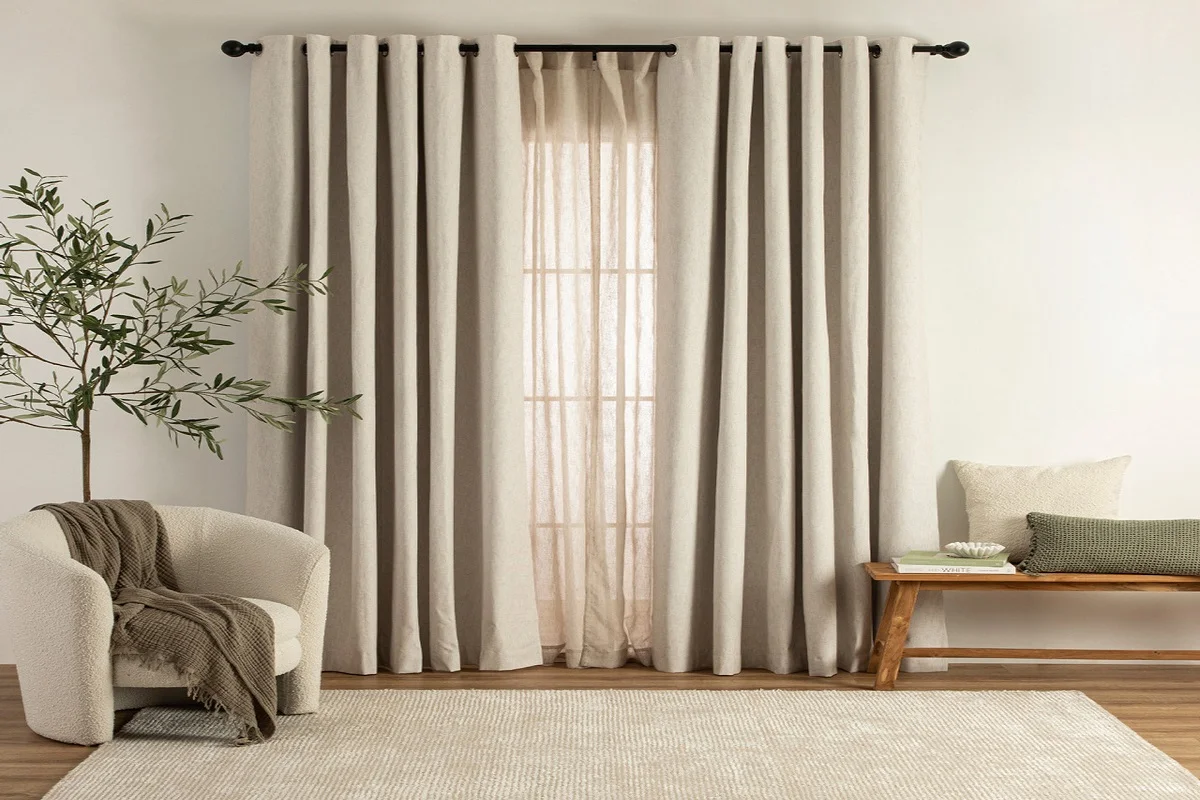In the intricate dance of home décor, curtains play a leading role that often goes unnoticed. Beyond their functional purpose of providing privacy and controlling light, curtains are a powerful aesthetic tool that can transform a space from mundane to magnificent. These fabric panels, hung with care, have the ability to dictate the ambiance of a room, elevate its style, and contribute to the overall harmony of the living environment.
Imagine a room with bare windows—functional, perhaps, but lacking the warmth, personality, and visual appeal that well-chosen curtains can bring. The impact of curtains on home décor is profound, extending far beyond their practical use. They have the ability to soften harsh lines, add texture, and introduce colour to a room, creating a nuanced atmosphere that reflects the inhabitants’ personality and taste.
In this exploration of the role that curtains play in shaping the aesthetic landscape of our homes, we will delve into the various aspects of curtain selection, from fabric choices and design trends to the psychological impact of colour. Join us on a journey through the world of curtains, where functionality meets artistry, and discover how these seemingly simple window coverings can be the transformative element your home has been waiting for.
How important are curtains for Home Décor
Curtains play a crucial and multifaceted role in home décor, extending far beyond their utilitarian function of providing privacy and controlling light. Their importance lies in their ability to enhance the overall aesthetic appeal of a space, contributing to the mood, style, and ambiance of a room. Here are several reasons why curtains are integral to home décor:
Aesthetic Impact: Curtains are a prominent feature that draws the eye. The right choice of curtains can add texture, colour, and visual interest to a room, serving as a key element in tying together the overall design scheme.
Softening and Balancing: Curtains have the power to soften the harsh lines of windows and walls, creating a more inviting and comfortable environment. They balance the visual weight of other furniture and accessories, adding a layer of finesse to the room.
Light Control: Beyond their decorative role, curtains are essential for controlling natural light. The ability to adjust the amount of sunlight entering a room can significantly impact the atmosphere, making it cosy and intimate or bright and airy, depending on the desired effect.
Privacy: Curtains provide a practical solution for maintaining privacy within the home. Whether in bedrooms, living rooms, or bathrooms, the right curtains can create a sense of seclusion without compromising on style.
Temperature Regulation: In addition to controlling light, curtains can also contribute to temperature regulation. Heavier curtains can help insulate a room, keeping it warmer in the winter and cooler in the summer, thus contributing to energy efficiency.
Personalization: Curtains offer an excellent opportunity for personalization and self-expression. From choosing the fabric and colour to experimenting with patterns and styles, curtains allow homeowners to showcase their taste and style preferences.
Framing Views: By framing windows and views, curtains can act as a visual frame, directing attention to the outside scenery. This not only enhances the beauty of the surroundings but also creates a sense of continuity between the interior and exterior spaces.
Changing Seasons and Moods: The ability to switch out curtains easily makes them a versatile tool for adapting to changing seasons and moods. Lighter, sheer curtains for spring and summer can be replaced with heavier, more insulating options for fall and winter.
Type of curtains
There are various types of curtains available, each designed to serve specific purposes and aesthetic preferences. Here’s a list of common types of curtains:
Rod Pocket Curtains:
- Features a sewn pocket at the top where a curtain rod is threaded through.
- Creates a gathered, ruffled look.
Tab Top Curtains:
- Loops of fabric at the top form tabs through which the curtain rod is threaded.
- Offers a casual and relaxed appearance.
Grommet Curtains:
- Has metal rings (grommets) at the top through which the curtain rod is threaded.
- Offers a modern and streamlined look, with even pleats.
Pleated Curtains:
- Fabric is folded into pleats at the top.
- Provides a more formal and structured appearance.
Eyelet Curtains:
- Similar to grommet curtains, but with fabric-covered rings.
- Adds a decorative touch to the curtain’s top.
Sheer Curtains:
- Made of lightweight and translucent fabric.
- Allows diffused light and maintains privacy.
Blackout Curtains:
- Crafted with heavy, opaque fabric to block out light.
- Ideal for bedrooms and spaces requiring privacy.
Café Curtains:
- Covers only a portion of the window, typically from the middle to the bottom.
- Offers privacy while allowing light to enter.
Valance:
- A short curtain or drapery that covers only the top portion of the window.
- Used for decorative purposes and to conceal curtain hardware.
Roman Shades:
- Fabric panels that fold or stack when the shade is raised.
- Provides a clean and tailored look.
Advantages and Disadvantages of Curtain
Advantages of Curtains:
Aesthetic Enhancement:
- Curtains contribute significantly to the overall look and feel of a room, adding a layer of style and sophistication.
Privacy Control:
- Curtains offer an effective means of controlling privacy within a living space, especially in bedrooms and bathrooms.
Light Regulation:
- Curtains allow for control over natural light, enabling residents to adjust the brightness and ambiance of a room.
Temperature Regulation:
- Heavier curtains can provide insulation, helping to regulate indoor temperatures and contribute to energy efficiency.
Versatility:
- Available in a wide variety of styles, colours, and fabrics, curtains offer endless design possibilities to suit diverse tastes and preferences.
Personalization:
- Curtains allow homeowners to express their personality and style through fabric choices, patterns, and decorative elements.
Seasonal Adaptability:
- Easy to change, curtains can be swapped out seasonally to reflect changing weather and design preferences.
Noise Reduction:
- Thick or layered curtains can help dampen external noise, providing a quieter and more peaceful living environment.
Frame Views:
- Curtains can frame windows and views, enhancing the visual appeal of both the interior and exterior spaces.
Easy Installation:
- Most curtains are relatively easy to install, making them a convenient and accessible window treatment option.
Disadvantages of Curtains:
Maintenance:
- Some types of curtains require regular maintenance, including cleaning and occasional reinstallation.
Allergen Accumulation:
- Curtains can trap dust and allergens, requiring frequent cleaning to maintain a healthy indoor environment.
Limited Light:
- Heavy or blackout curtains, while effective for light control, may limit natural light, making a room feel darker.
Space Requirements:
- Curtains, when drawn back, require additional wall space on either side of the window, which may not be suitable for smaller rooms.
Fabric Fading:
- Direct exposure to sunlight can cause fabric curtains to fade over time, impacting their appearance.
Not Suitable for Allergy Sufferers:
- Certain fabrics or materials used in curtains may trigger allergies in sensitive individuals.
Cost Variability:
- High-quality or custom-made curtains can be expensive, impacting the overall cost of decorating a room.
Limited Functionality:
- While curtains provide privacy and light control, they may not be as effective in completely blocking out light or insulating against extreme temperatures.
Style Trends:
- Design trends in curtains can change, and updating curtains to match current styles may require additional investment.
Installation Challenges:
- Depending on the type of curtain and window, installation can be challenging, especially for those with limited DIY skills.
Maintenance and Care for Curtains
Proper maintenance and care for curtains are essential to ensure their longevity and to keep them looking fresh and appealing. Here are some guidelines for maintaining and caring for curtains:
Regular Dusting:
Dust your curtains regularly using a soft brush or a vacuum cleaner with a brush attachment. This helps prevent the accumulation of dust and allergens.
Gentle Vacuuming:
For heavier fabrics or curtains with intricate details, use a gentle vacuum cleaner to remove dust and debris. Be sure to adjust the vacuum’s settings to avoid causing damage.
Washing Instructions:
Check the care label on your curtains for specific washing instructions. Some curtains can be machine-washed, while others may require dry cleaning. Follow the recommended guidelines to avoid damaging the fabric.
Hand Washing:
If machine washing is not recommended, hand wash curtains in a mild detergent and lukewarm water. Gently agitate the water to avoid wrinkling or damaging the fabric.
Avoid Harsh Chemicals:
When washing or spot cleaning, avoid using harsh chemicals or bleach, as they can weaken the fabric and alter its colour. opt for mild detergents specifically designed for delicate fabrics.
Test Cleaning Products:
Before using any cleaning product on your curtains, test it on a small, inconspicuous area to ensure it doesn’t cause discoloration or damage.
Professional Cleaning:
For curtains that are challenging to clean at home or made of delicate fabrics, consider professional dry cleaning services. This helps maintain the integrity of the material.
Prevent Stains:
Attend spills and stains promptly. Blot the stain with a clean, dry cloth to absorb as much of the liquid as possible. Avoid rubbing, as this can spread the stain.
Rotate and Reframe:
Periodically rotate or reframe your curtains to distribute sunlight exposure evenly. This helps prevent fading on specific areas and extends the life of the fabric.
Ironing Tips:
If your curtains are machine-washable, iron them on a low heat setting while they are still slightly damp. Use a pressing cloth to protect delicate fabrics.
Conclusion
In conclusion, curtains are far more than mere window coverings; they are integral elements in the tapestry of home décor. The choices we make in selecting and maintaining our curtains have a profound impact on the ambiance, style, and functionality of our living spaces. From the aesthetic enhancement they bring to a room to their practical functions such as providing privacy, controlling light, and regulating temperature, curtains play a multifaceted role in shaping the character of our homes









